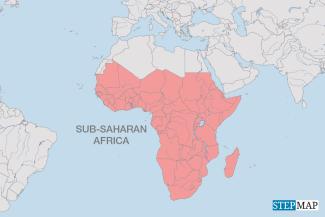Demographic change
Slow decline of African birth rates

In low-income countries, children are seen as future providers. They offer a safety net in old age. Having many children is thus linked to prestige and honour. If fits the picture that sub-Saharan Africa, the poorest world region, has the highest pregnancy rate (218 per 1000 women per year) worldwide, according to the Guttmacher Institute, a US-based think tank that specialises in reproductive health.
Nonetheless, babies are not necessarily considered to be blessings. The Guttmacher data show that the region has the highest rate of unwanted pregnancies, estimated at 91 per 1000. In other words, about 42 % of pregnancies are unintended. Almost 40 % of them are aborted, according to Guttmacher numbers.
Sub-Sahara Africa, moreover, has the highest rate of child marriage, with 35 % of the female youth experiencing their wedding below the age of 18. Experts reckon that the birth rate of adolescent girls in sub-Saharan Africa is twice the global average. The number of young people entering childbearing age is also correlated with abortions, maternal illnesses and deaths.
Research funded by USAID has concluded that child marriage leads to poor family planning and bad health outcomes. In a similar vein, an essay in the journal BMC International Health and Human Rights reported that child brides are eight times more likely to have three or more children than their peers who marry later.
Unmet demand for contraceptives
Sub-Saharan Africa has the lowest contraceptive prevalence rate at 29 %. Less than half of the demand for modern contraceptive methods is met in the region. The unmet need is greatest in rural areas and poor communities. Young people are affected in particular.
No doubt, there is need to invest more in issues that concern youth. This includes education – not only regarding reproductive health. It also includes better health services and ensuring contraceptives are available to all who need them. Obviously, it also includes creating more job opportunities by building infrastructure and developing the economy.
Without such investments, African countries cannot reap a demographic dividend. They will not benefit from their populations’ large shares of young people, but keep struggling with unemployment, destitution and mass frustration.
Teenage girls matter especially. They must not be condemned to early motherhood. Instead of raising large families with many needy members, they should be empowered to find jobs, earn money, contribute to their country’s economic success and determine their own fate. Large numbers of children are not simply a result of poverty. They are a cause of poverty too.
The good news is that progress is happening. Recent data show birth rates declining in several countries. In Nigeria, for example, women are now said to have fewer than five children on average. The country’s population is still growing fast and is set to double to 430 million by 2060. Earlier forecasts, however, expected it to rise by yet 100 million more. Birth rates are even lower in several other African countries, including in Senegal (3.9) and Ghana (3.8). The figures for Ethiopia, Rwanda and Guinea are slightly above four. It obviously helps that some faith leaders have begun to endorse family planning.
Experts have long wondered why sub-Saharan Africa is slow to follow the demographic path of other world regions. The Economist offers an answer. The reason may well be that education efforts were reduced in the course of austerity measures in the 1980s and 1990s, depriving many girls of the education they deserved.
Mahwish Gul is a Nairobi-based consultant who specialises in development management.
mahwish.gul@gmail.com















